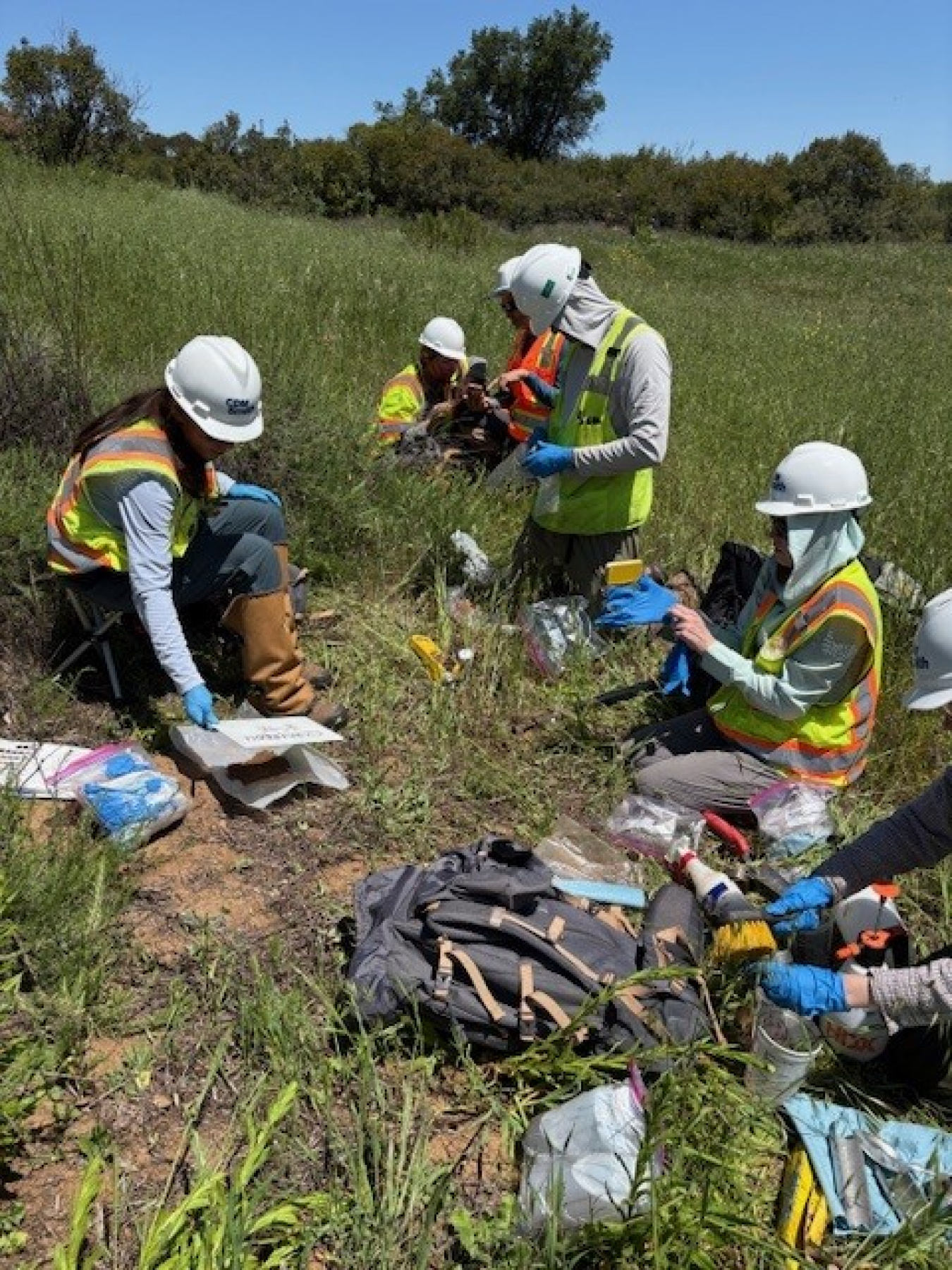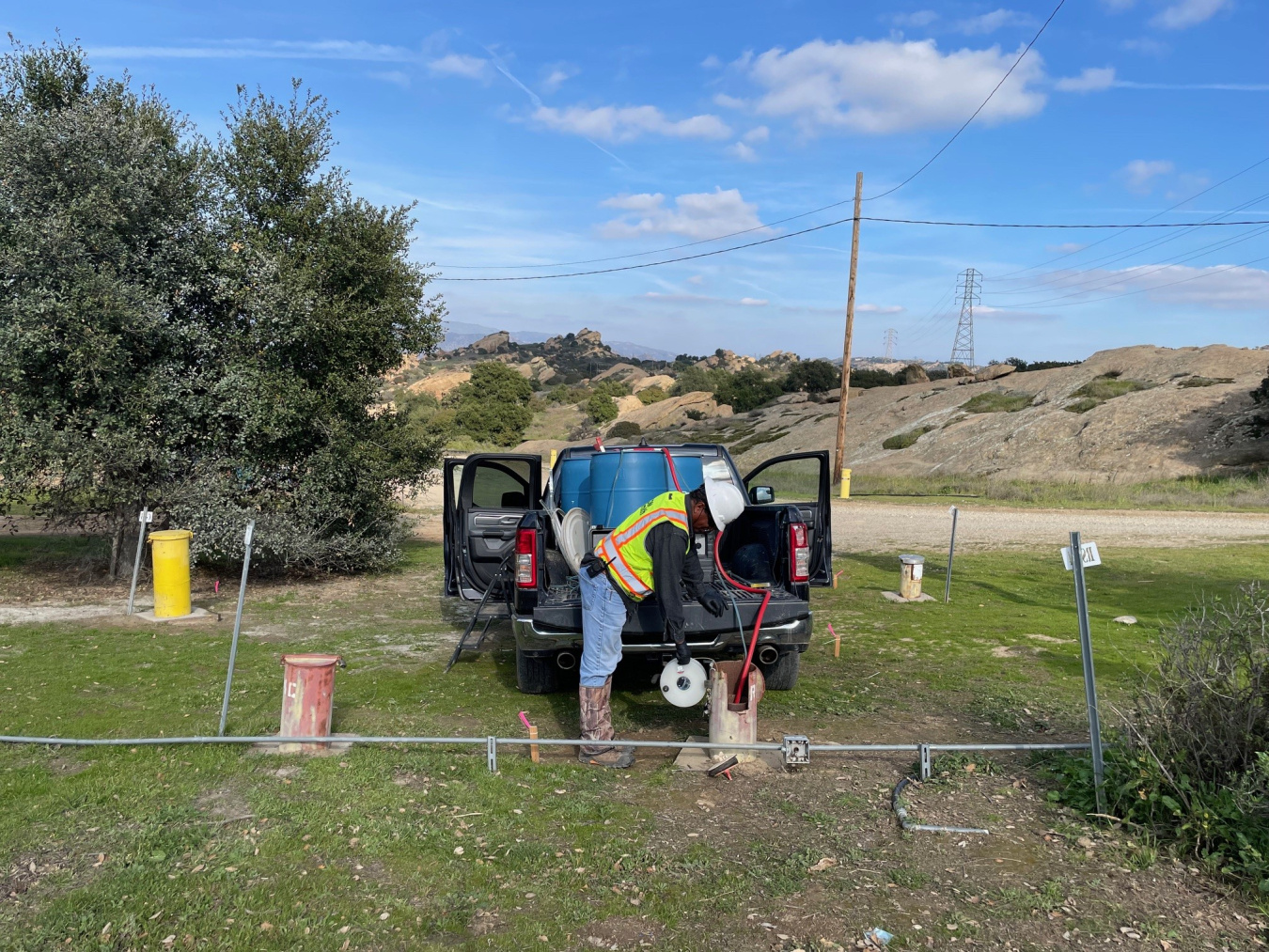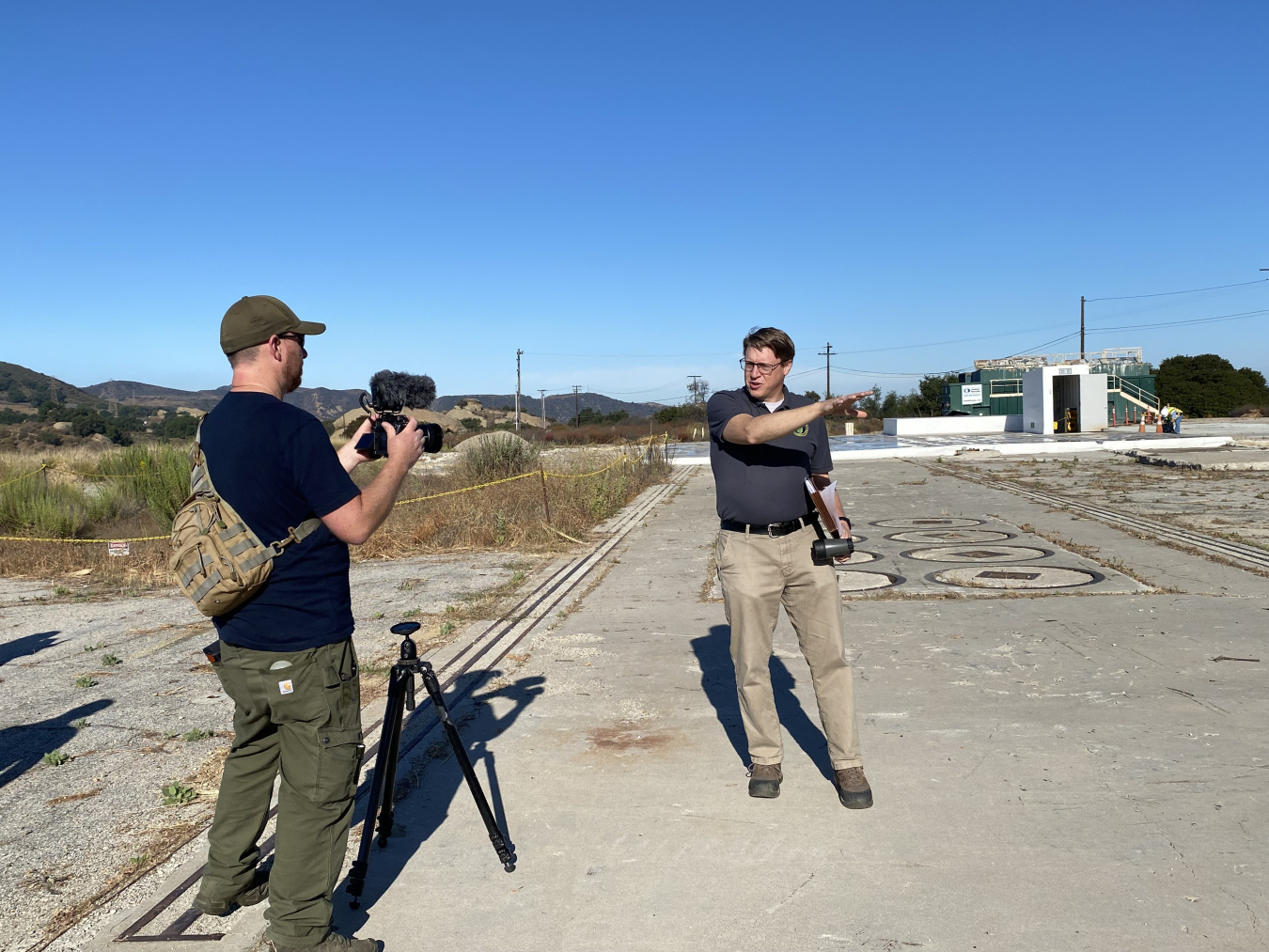Approval for an innovative groundwater pilot study, completion of ongoing soil sampling and submission of demolition work plans to state regulators are all part of the recent progress toward cleanup at the Santa Susana Field Laboratory. August 26, 2025
Office of Environmental Management
August 26, 2025A U.S. Department of Energy Office of Environmental Management contractor measures water levels at one of the wells onsite at the Energy Technology Engineering Center. Photo by Pamela Hartman
SIMI VALLEY, Calif. — Approval for an innovative groundwater pilot study, completion of ongoing soil sampling and submission of demolition work plans to state regulators are all part of the recent progress toward cleanup at the U.S. Department of Energy’s (DOE) Energy Technology Engineering Center (ETEC) at the Santa Susana Field Laboratory (SSFL).
SSFL is a 2,850-acre former rocket engine and nuclear research facility comprised of four operational areas. DOE’s Office of Environmental Management (EM) is charged with remediation in Area IV, where ETEC previously operated.
In July, the California State Water Resources Control Board approved a permit for a pilot study at ETEC’s Hazardous Materials Storage Area.
The in-situ, or in-place, study is an innovative remediation approach that uses biological and chemical reduction to treat contaminated groundwater, said Josh Mengers, EM’s federal project director for ETEC.
The pilot will be a small-scale study that involves injecting biological and chemical amendments into separate wells to create a reductive environment and stimulate natural degradation of the contaminants present. EM will then monitor the progress over time.
“We’re conducting this pilot on a small scale because we want to understand the sphere of influence these amendments will have on the contaminants,” Mengers said, adding that using two types of amendments will hopefully create a more robust treatment with two degradation mechanisms happening.
“We’re not proposing that this is going to be the solution, but we’re testing it out to see how well it works,” he said.
The pilot study is just one groundwater interim measure EM has been conducting at ETEC.
Pumping groundwater manually has taken place at the Former Sodium Disposal Facility since 2017, and in May 2024, an automated pump system became operational. To date, more than 67,000 gallons of contaminated groundwater have been removed both manually and automatically.

U.S. Department of Energy Office of Environmental Management geologists perform characterization for total petroleum hydrocarbons soil samples taken at China Flats in 2024. Photo by Pamela Hartman
In addition to continued interim groundwater measures, crews have completed several soil sampling events at ETEC.
Over the past year, EM conducted several soil sampling events to collect data on laboratory method reporting limits (MRL) and backfill sources, and to fill gaps in background data.
The MRL study aimed to understand the contaminant concentrations an instrument can reliably detect and report. Backfill sampling tests potential sources for material to replace any soil that may be removed during cleanup, ensuring EM can complete remediation without causing environmental harm.
EM also sampled additional background data to fill data gaps for specific groups of chemicals, including total petroleum hydrocarbons (TPH). These studies are essential for achieving a feasible cleanup that is safe for the community.
“Sampling is the only way to understand the type of contamination we’re dealing with, how much there is and where it is,” said Pamela Hartman, EM’s deputy federal project director for ETEC. “Without sampling, we don’t have the information we need to clean up the site.”
Crews collected over 5,800 samples for the initial characterization of DOE’s portion of SSFL, Hartman said. During the last year, samples were taken at 30 locations for the TPH study and at six locations for the MRL study.
Andrew Walker, left, interviews U.S. Department of Energy Office of Environmental Management Federal Project Director Josh Mengers about the System for Nuclear Auxiliary Power program at Santa Susana Field Laboratory on July 28. Photo by Karen Edson
Another recent achievement was ETEC’s submission of work plans for the Building 4024 basement demolition to the California Department of Toxic Substances Control for review and approval, setting the stage for the next accomplishment as EM works with state regulators to gain their approval and continue progress at SSFL.
The basement is the last remnant of the rich legacy of research and development of nuclear reactors as part of the System for Nuclear Auxiliary Power program. It was this legacy that brought social media influencer Andrew Walker to ETEC for the second time since October 2024 to film footage for his social media channel.
-Contributor: Melissa Simon
To receive the latest news and updates about the Office of Environmental Management, submit your e-mail address.



